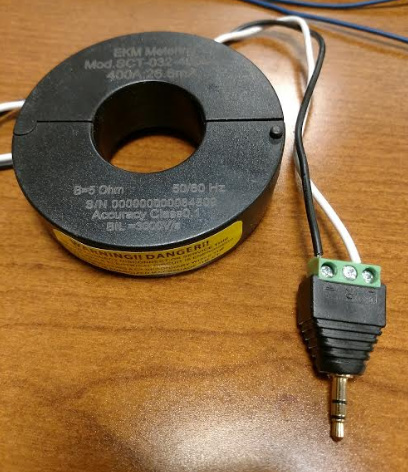OK, the emonPi was designed for use with the YHDC SCT-013-000, to read up to 100 A rms. That c.t. delivers 50 mA at 100 A primary current, and the burden resistor (inside the emonPi) was chosen to generate the correct voltage - about 1.1 V rms - at 50 mA.
The readings are then scaled by using a calibration constant to indicate amperes, that value is then multiplied by the voltage to give the power in watts. All this is done in the “emon” part of the emonPi.
Your c.t. only delivers 26.6 mA, and that’s at 400 A primary current. Ideally, we need to replace the internal burden resistor with a higher-valued one. We could calculate the value either for the full 400 A, or for any lower value you choose - provided the c.t. is capable of that, and for that I’d need more data than the link you supplied gives me. However, replacing the burden resistor is a fairly intricate procedure that I wouldn’t recommend unless you’re familiar with working on printed circuit boards.
I’d suggest to begin with that you set up emonHub to give you the correct power and voltage readings, and accept that you will be losing the ability to measure very low powers. We can revisit this later if necessary.
If you use a web browser in emonCMS, under Setup you’ll see EmonHub, and there, an Edit Config button. That takes you to the configuration file emonHub.conf.
The entry for the emonPi looks like this:
[[5]]
nodename = emonpi
[[[rx]]]
names = power1,power2,power1pluspower2,vrms,t1,t2,t3,t4,t5,t6,pulsecount
datacodes = h, h, h, h, h, h, h, h, h, h, L
scales = 1,1,1,0.01,0.1,0.1,0.1,0.1,0.1,0.1,1
units = W,W,W,V,C,C,C,C,C,C,p
The first three numbers in scales = are scaling multipliers for power1, power2 & power1pluspower2
You need to change each of those 1, to 7.519, [that’s calculated as (400 ÷ 100) × (50 ÷ 26.6) ]
If you discover the calibration is not quite right, it’s OK to adjust those numbers to correct the readings.
Leave everything else as it is.
